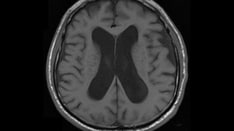Post-acute sequelae of COVID-19 (PASC), also known as post-COVID syndrome or long COVID, is a nebulous condition associated with an array of symptoms. The most common manifestations across multiple studies include fatigue, exercise intolerance, and dyspnea. Physiologic derangements responsible for these symptoms have been identified at the population level but are often opaque to the individual patients and their physicians.
Recommendations for Pulmonologists
A new review in CHEST describes the challenge that is long COVID. In fact, it chronicles the difficulties inherent to evaluating unexplained exercise intolerance, dyspnea, and fatigue, whether the patient is post-COVID or not. The authors do an excellent job describing the skeletal muscle and cardiorespiratory abnormalities that drive these symptoms. It's fair to say they collectively know more about the pathophysiology of myalgic encephalomyelitis/chronic fatigue syndrome (ME/CFS), postural orthostatic tachycardia syndrome (POTS), and PASC on invasive cardiopulmonary exercises testing (iCPET) than does anyone else in the world. Their discussion of peripheral shunting, decreased preload, mitochondrial dysfunction, and hyperventilation is excellent. I'd be willing to bet that none of those phenomena are considered by the average pulmonologist evaluating a patient for unexplained dyspnea. This review is a must-read for all pulmonologists.

The article excels at describing the physiologic abnormalities that drive exercise intolerance; however, it offers little for the practicing clinician to apply at the bedside. The tables, flowcharts, and discussion all belie a clinical reality that goes unmentioned. iCPET is required to differentiate hyperventilation (I prefer the broader term dysfunctional breathing for this, but that's a topic for a different piece) from gas-exchange abnormalities. iCPET is required to tease out deconditioning vs mitochondrial dysfunction vs preload dependence. Unfortunately, most pulmonologists can't interpret a noninvasive CPET, can't order an iCPET, and are woefully undertrained to evaluate the body's response to exercise. Furthermore, iCPET simply isn't an accessible or cost-effective test that can meet the current and expected long-COVID demand.
Moreover, the review doesn't include enough contextual CPET interpretation. Even iCPET requires an appropriate patient history with ancillary testing to make an accurate diagnosis. There's too much overlap across conditions in the patterned responses to exercise. Interpretation is also hindered by the wide confidence intervals and blurred thresholds for normality inherent in most CPET and iCPET measures. It's great to have minute ventilation to maximum voluntary ventilation (VE/MVV) and anaerobic threshold cut-offs early in your diagnostic algorithm (Figure 2 in the review). When no one agrees on how to measure MVV (actual testing vs forced expiratory volume in 1 second x 35-40) or anaerobic threshold, these criteria don't mean much. Even if we could agree, interpretation varies by presentation and overall exercise response. A VE/MVV > 0.70 represents a mechanical respiratory limitation when the patient stops early or excellent effort in a fit individual when they don't.
PASC evaluations should start with a detailed activity history, dysfunctional breathing questions, a behavioral health and sleep history, and assessment for ME/CFS and POTS. Ancillary testing completed prior to CPET should be reviewed (usually a lot of it because it's generally easier to obtain a CT, echocardiogram, or spirometry than it is to get a CPET). When all that has been done, you're ready to order and interpret a noninvasive CPET.
Key Takeaways
At that point, what information does CPET provide? It's a fair question and an important one. CPET has its detractors. Here's my pitch, and I believe the PASC phenomenon strengthens my argument.
CPET confirms the presence of deconditioning/myopathy, which is ubiquitous both in isolation or combined with another disorder, and quantifies its severity. It identifies dysfunctional breathing and reveals subtle gas-exchange abnormalities that can be missed (baseline and peak arterial blood gas testing goes a long way here). Last, it can be used to educate patients and counsel them on an exercise prescription, the most powerful treatment available for unexplained dyspnea and exercise intolerance regardless of cause.
Aaron B. Holley, MD, is a professor of medicine at Uniformed Services University in Bethesda, Maryland, and a pulmonary/sleep and critical care medicine physician at MedStar Washington Hospital Center in Washington, DC. He covers a wide range of topics in pulmonary, critical care, and sleep medicine .
Follow Medscape on Facebook, X (formerly known as Twitter), Instagram, and YouTube
Credits:
Images: E+/Getty Images
Medscape Critical Care © 2023 WebMD, LLC
Any views expressed above are the author's own and do not necessarily reflect the views of WebMD or Medscape.
Cite this: Post-COVID Syndrome and Its Relationship to Other Disorders Characterized by Fatigue and Exercise Intolerance - Medscape - Oct 11, 2023.








Comments